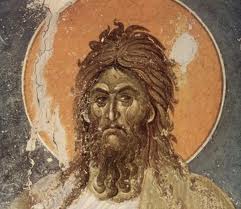
John the Baptist Bones Discovered.
Bulgarian archeologists have found new evidence they say supports the theory that a knuckle bone and other human remains found under a 4th century church floor in Bulgaria may be of John the Baptist.
When archaeologists Kazimir Popkonstantinov and Rossina Kostova claimed to have found the bones of John the Baptist amid the ruins of an ancient Bulgarian monastery experts were understandably skeptical.
Researchers were said to be ‘surprised’ when they discovered the very early age of the remains, but admit ‘dating evidence alone cannot prove the bones to be of John the Baptist’.
Also, in a separate study scientists from the University of Copenhagen analyzed the DNA of the bones, finding as well that they came from a single individual, probably a man, from a family in the modern-day Middle East, where John would have lived.
The Oxford theory is that in the latter part of the fourth century, monks had taken relics of John the Baptist out of Jerusalem and these included portions of skull. These relics were soon summoned to Constantinople by the Roman Emperor who built a church to house them there.
Further research by Dr Kazan from Oxford University suggests that the reliquary used to contain them may have resembled the sarcophagus-shaped casket discovered at Sveti Ivan, commented National Geographic.
Archaeological and written records suggest that these reliquaries were first developed and used at Constantinople by the city’s ruling elite at around the time that the relics of John the Baptist are said to have arrived there.
Reliquary box thought to have been used to carry the bones to the island. The exterior has inscriptions written in ancient Greek mentioning John the Baptist and his feast day. The box was found near the altar of the church.
The new dating evidence will be revealed in a TV documentary to be shown on the National Geographic channel on Sunday June 17th 2012.
Bulgarian archaeologists had found a small sandstone box made of hardened volcanic ash close to the sarcophagus.